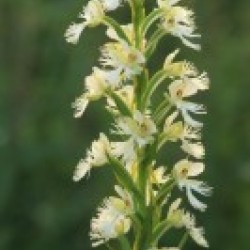
Rachel Wells
Biology
Hendrix College
I am going to be a senior biology major at Hendrix College in Conway, AR. I wish to pursue a career in conservation ecology and am very excited about this internship! My passions outside of biology include reading, ballet, the German language, hiking, swimming, and hanging out with my family and friends.

Pollinator limitation and population genetics of a federally threatened orchid (2015)
Ecology, Genetics, Population Biology, Reproductive Biology
For the past 17 years the eastern prairie fringed orchid (Platanthera leuchophaea) has been undergoing restoration management throughout Illinois. Due to habitat loss and fragmentation between populations, it is thought that the plant's known pollinator, a hawk moth species (Sphinx eremitus), is unable to pollinate between some of the sites. Therefore, restoration techniques have included hand pollination within certain sites as well as seed transfers between certain sites. Sites with no pollinator and only hand pollination will most likely have a higher rate of inbreeding than other sites and could result in inbreeding depression. If inbreeding depression is occurring, then it is likely that the plants in those populations will be less fit than other populations. In our study we will examine morphological fitness measurements of the orchid, factor in the presence or absence of the hawk moth and its larvae at population sites, and then compare genetic diversity between populations to determine whether the pollination and seed dispersal methods are influencing orchid populations.
